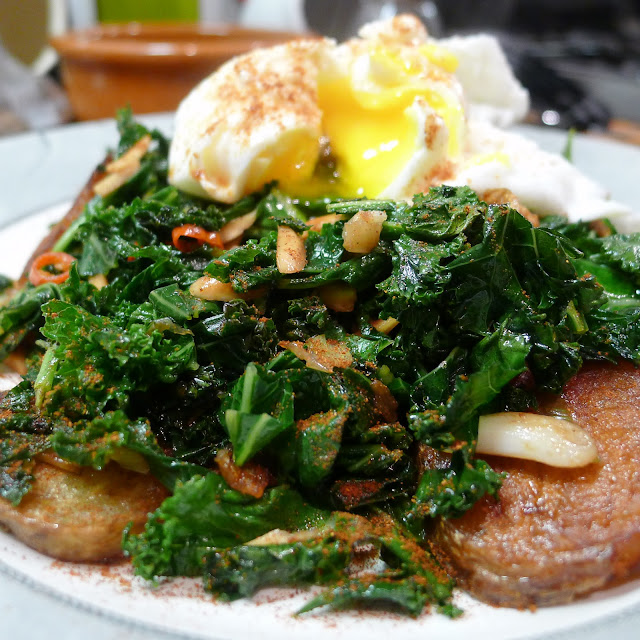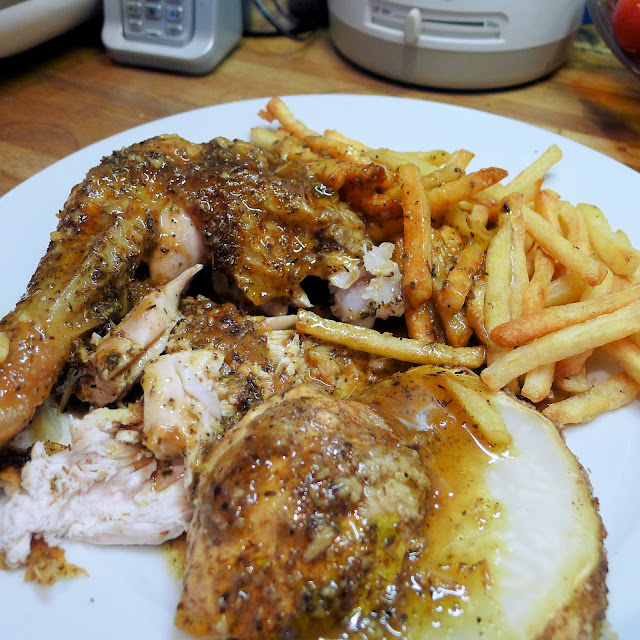I like spice and so I chopped the birdseye chilli whole. If your preference is for less heat, do make sure you de-vein and seed it before chopping (and don’t forget to scrub your hands after!), or in fact just use a milder chili.
This, I think, has an excellent blend of textures and tastes, particularly with the richness of the egg yolk cutting through the ferrous kale.
Almond & garlic & kale with sauté potatoes & poached egg
Serves 1 as a main
A few glugs of olive oil
1 large garlic clove, finely sliced
10g almonds nibs, roughly chopped
5 or so large handfuls of roughly chopped curly kale (tough stalks & centre ribs discarded)
1 birds eye chilli, finely chopped
150g potato, scrubbed, cut into 4 chunks
2 spring onions, finely chopped
splash of light soy sauce
splash of toasted sesame oil
1 egg
smoked paprika
While the potatoes are cooking, in a large dry frying or sauté pan (you’ll use this to sauté the potatoes later) toast the almond nibs until lightly browned then set aside.
Meanwhile add a good splash of oil to a wok over a high heat. Throw in the garlic slices and chilli and stirfry until the garlic is softened and starting to colour (only about 10 seconds). Lower the heat then add the kale and spring onions. Stir until well mixed and cook for about 8 minutes, adding a splash of water if needed to help cook the kale and stop it sticking.
Halfway through the kale’s cooking time poach an egg for about 4 minutes (I use the same water used to parboil the potatoes).
When the kale is softened and vivid green stir in the potato and almonds and a small splash each of soy and sesame oil. Stir through then turn onto a plate topped with the poached egg and dusted with a little smoked paprika.















































